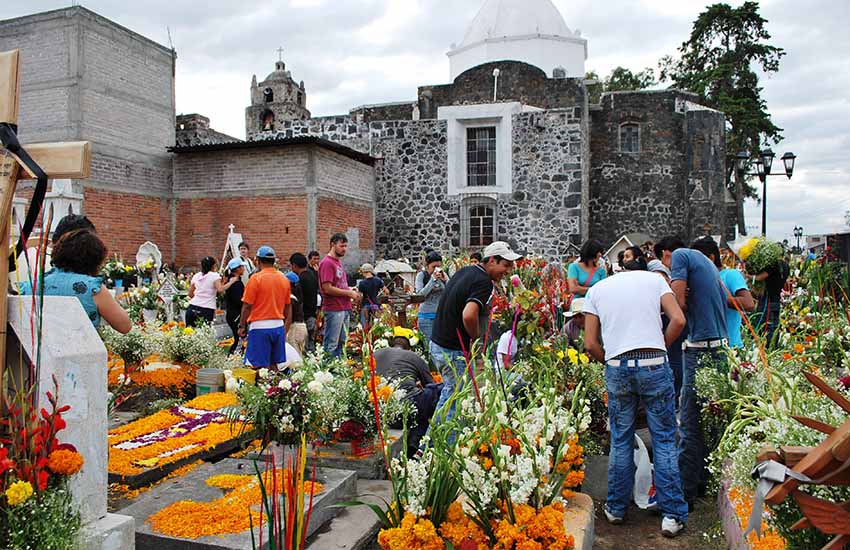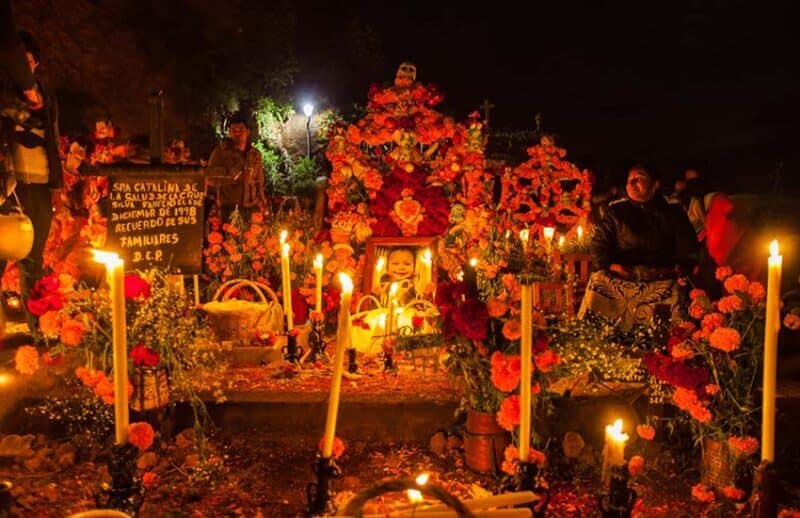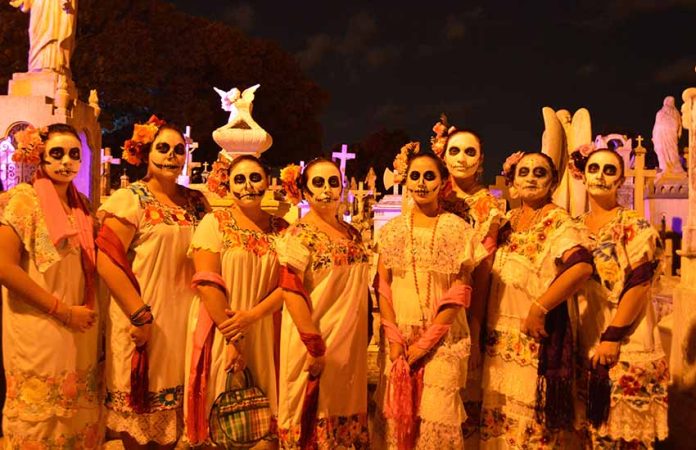The animated film Coco has probably done more than anything else to take the “ew” factor out of Day of the Dead for those of us who grew up with nothing like it.
This is great because there are good psychological reasons for celebrating it.
Grief is universal, but how we cope is largely determined by culture. European cultures have mostly lost their equivalent to Day of the Dead, with only All Souls’ Day and Halloween as distant reminders that we, too, used to actively honor our ancestors. Instead, a belief took hold to see anything associated with death as evil, something to be shunned, ignored and fought against at all costs.
Mexico is not completely immune to this, says National Autonomous University of Mexico professor and researcher Beatriz Glowinski, an expert on death and grieving. But that Day of the Dead has survived gives Mexicans a special outlet for their emotions.
Simply put, Day of the Dead is an annual festival dedicated to remembering lost loved ones and, yes, to mock something we fear. The underlying belief is that the dead can come back at this time to the land of the living, but it is no coincidence that it occurs at the end of the harvest, when fields die to sustain the living.

It is a syncretism of Mesoamerican and Catholic beliefs or, more accurately, the survival of Mesoamerican beliefs about death with a Catholic veneer. It survives in two forms.
The older and more “intimate” Day of the Dead is a gathering of friends and family to remember those important to them. The dead are not lamented but welcomed back as part of a family reunion.
The other Day of the Dead can be found in the large festivals and parades that have grown in popularity in both Mexico and the United States. In Mexico, they began to become more important as local and national efforts to counter the influence of Halloween began in the 1990s.
Many communities today have one or more open public events on this day, and Day of the Dead celebrations are popular in schools from kindergarten to college.
All cultures recognize the psychological need to grieve, but they also put limits on how long and how publicly a person may be in mourning.
“It is very complicated and very difficult … there isn’t a period of time … it does not exist,” Glowinski says. “It can take years, depending on the person.”

And if grief is not addressed adequately, “a person can become stuck in their lives personally and professionally,” she says.
Even after the proscribed mourning period, grief lingers and returns, and Day of the Dead addresses this. Simply visiting graves, as is done in other cultures, can have the same purpose, but it is often a solitary activity, whereas Day of the Dead by its very nature is social.
On and around November 2, Mexicans have permission and even the expectation to acknowledge their losses in a supportive environment. The ritual of shopping for supplies, preparing an altar and sharing time with loved ones is therapeutic. Areas we do not casually visit, such as cemeteries, become a place of social gathering, both for those attending to family graves and those of us looking on.
There is nothing morbid or even remotely Halloweenish about this.
It is easy to see how lighting candles on graves fulfills this purpose, but what about the superficially corny skull and skeleton decorations? These decorations, parties and parades are about showing the relationship between life and death and take the morbidity out of thinking about death.
Many public festivals also have allusions to the cultural and historical past, making Day of the Dead also about connecting to heritage.

Many might have trouble with the belief that the dead come back, but counselor and psychotherapist Merrie Haskins says that such a belief can be beneficial. “[It] means that you have the chance to say anything that was left unsaid before they died.”
Taking the stigma out of talking about death also leads us to express what we want when it is our time to die and to communicate that to family. This is important because said family will be able to find closure when the time comes, knowing that they respected those wishes.
In the U.S., Day of the Dead was originally something celebrated privately only by Mexican-heritage families, but it’s growing in popularity. In the 1970s, public observances began with the aim of asserting Mexican American identity. Only recently has there been interest from the culture at large in the holiday, introduced in schools and with decorations now available in Walmart and Target.
If Day of the Dead becomes a larger part of the U.S. culture in some way, it is because it provides something that our native mourning rituals lack: social recognition and support for the idea that those who have gone are still important to us.
It’s not necessary to literally believe that the dead come back, nor be Catholic, to benefit from the observation, Glowinski says, but the communal aspect is essential. The annual observance is “ … a phenomenal way to deal with the emotions that remembering our loved ones bring,” she says, adding, “They externalize such emotions, and this is very liberating and healing.”
On a personal level, I find Day of the Dead particularly meaningful as I live so far away and rarely go back “home.” In particular, I cannot visit my mother’s grave as much as I “should,” and the yearly ritual of setting up the gringo side of my bicultural home’s altar is a more-than-acceptable substitute.
It even makes me smile as I place my favorite picture of my mother, in a 1970s plaid skirt and cat glasses, with the ever-present mug of tea in her hand.
Leigh Thelmadatter arrived in Mexico 18 years ago and fell in love with the land and the culture in particular its handcrafts and art. She is the author of Mexican Cartonería: Paper, Paste and Fiesta (Schiffer 2019). Her culture column appears regularly on Mexico News Daily.
